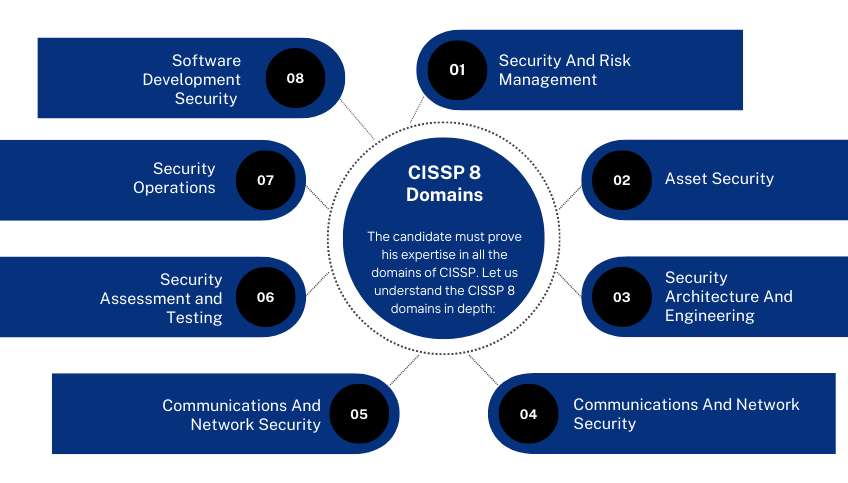
Security and Risk Management
Defining security goals and objects, Compliance, Legal Regulations
Risk Mitigation - Ensure right procedure and rules in place
Business Continuity - Maintain everyday productivity by using disaster recovery plans
e.g. Creating new compliance rules for organization, Social Engineering Attacks
Asset Security
Securing digital and physical assets. Also related to the storage, maintenance, retention and destruction of data
e.g. Save disposal of old assets, Physical Attack (USB, Thumb drive, Keycard Cloning)
Security Architecture & Engineering
Optimizes data security by ensuring effective tools, systems and processes are in place
Shared Responsibility - Employees in an organization play a active role in minimizing risks
e.g. Configuring Firewall
Communication and Network Security
Managing and security physical networks and wireless communication
e.g. User behavior’s analysis - employees connect to unprotected access points, Password Attack, Adversarial AI
Identity and Access Management (IAM)
Keeping data secure by ensuring users follow established policies to control and manage physical assets, like office spaces, and logical assets, such as networks and applications
Components: Identification, Authentication, Authorization, Accountability
e.g. Configuring employees keycard access, Adversarial AI
Security Assessment and Testing
Conducting security control testing, collecting and analyzing data, and conducting security audits to monitor the risks, threats and vulnerabilities
e.g. User permission audits - Ensure no unauthorized user can view sensitive data
Security Operations
Conducting investigation and implementing preventative measures
e.g. Unknown device connected to network - follow procedures to stop potential threat
Software Development Security
Uses secure coding practice’s, which are a set of recommended guidelines that are used to create secure applications and services
e.g., Ensure security best practices are incorporated into the software